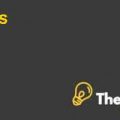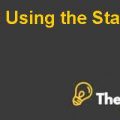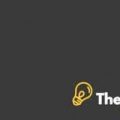THE ORETICAL INDIVIDUAL PAPER PROPOSAL Case Study Solution
Introduction
The zero marginal cost society has been transforming entire world and the industry of information goods as millions of the consumers are turning into prosumers and they have started producing and making their own videos, knowledge & news for zero cost in much more collaborative manner and thus they have been disrupting the range of different industries that include the magazines, newspapers, recording, television and film and the book publishing industry(Rifkin, 2014).
The purpose of this theoretical individual paper is to examine the facts that how the use of the sharing information over the internet has disrupted the various industries as named above. How the consumers have commenced their own sharing over the internet and what are the reasons behind it and lastly we would be discussing the factors to examine the above industries and highlight those factors and ways that are currently used by the newspaper and the book publishing industries to survive affluently in a near zero marginal cost information society.
Discussion
We begin our discussion first by discussing the reasons behind the risk of the zero marginal cost phenomenon:
Rise of Zero Marginal Cost Phenomenon
A collaborative commons trend is increasing around the global society of the world and the collaborative commons is springing alongside and transforming the economic life of the people. The aim is to narrow the divide of the income, increase the productivity, create a more ecologically sustainable society and democratizing the global economy(Rifkin, 2014).
The collaborative commons system is growing rapidly as it is a robust system as compared to the traditional capitalist system, however, much of the economy grown is not shown within the GDP figures. The economic transformation has been precipitated by the rise of zero marginal cost society phenomenon (Rifkin, 2014). New technologies are being acquired by the private companies in order to boost their productivity and they are also lowering the prices of producing their goods and providing the services to the customers so that the prices could be reduced for their goods.
However, in the light of the zero marginal cost society phenomenon, economists have never revealed that any technology revolution would unleash the extreme productivity and bring the costs of producing an extra unit near to zero, once these fixed expenses or costs have been absorbed. This means the zero marginal cost society phenomenon is going to make the physical goods and services along with the energy and information abundant and nearly zero and making it no longer subject to the market changes (Rifkin, 2014).
The zero marginal cost society phenomenon has just began during the past decade when the millions and billions of the consumers that are now called as prosumers began to use the internet to share their own music or videos through the online file sharing services such as YouTube and also started to share information via Wikipedia, free e-books and their social media on the World Wide Web(Masnick, 2014). The zero marginal cost society phenomenon shook a range of different industries including the music industry, crippled the book publishing market, brought the film industries to its knees and forced the newspaper and the book publishing industries to rethink their business models.
Impact of Zero Marginal Cost on Newspaper, Magazine & Book Publishing Industries
The zero marginal cost society phenomenon has created a destructive path for the industries such as the information and the recording industries since more than 10 years. This is because millions of the consumers have begun to share music, videos and knowledge across the internet at near zero marginal costs. This had resulted in the weakening of the revenues within the publishing fields, newspapers, music industry and the book publishing industry (Rifkin, 2014).
The first inkling of the paradox came in the year 1999, when the most famous music service, Napster, had developed a network that had enabled a thousand to millions of the people to share music without paying to the artists or the producers and this wreaked havoc over the entire music industry. Similar phenomenon had impacted disruptively over the newspaper, magazines and the book publishing industries(Masnick, 2014). When consumers began to share information online and to pass on their knowledge, they were completely bypassing the traditional markets.
It is just because of the rise of the zero marginal cost phenomenon, the magazine, book publishing and the newspaper revenues had fallen sharply and many of the publications also went out of the business. These publications were unable to compete with the blogs and the free web media that were operating at near to zero marginal cost. In the same manner, the book publishing industries also faced a major setback and they started to shrive as the doors were closed by the retail bookstores because more prosumers were publishing fee e-books over the internet.
Furthermore, if we talk about the impact of the zero marginal cost phenomenon on the education sector, then 6 million students have been enrolled currently in the free Massive Open Online Courses & these are operating at around zero marginal cost and they are receiving college credits where world class academics are teaching. According to Rifkin, the internet of the things would connect the world in a seamless network. Anyone can go up on the internet of the things and capture the big data that is flowing through that network and then make use of their own mobile devices and the apps to create their own algorithms just like any bug guy at Google would do(Editors, 2016)..............
This is just a sample partial work. Please place the order on the website to get your own originally done case solution.













